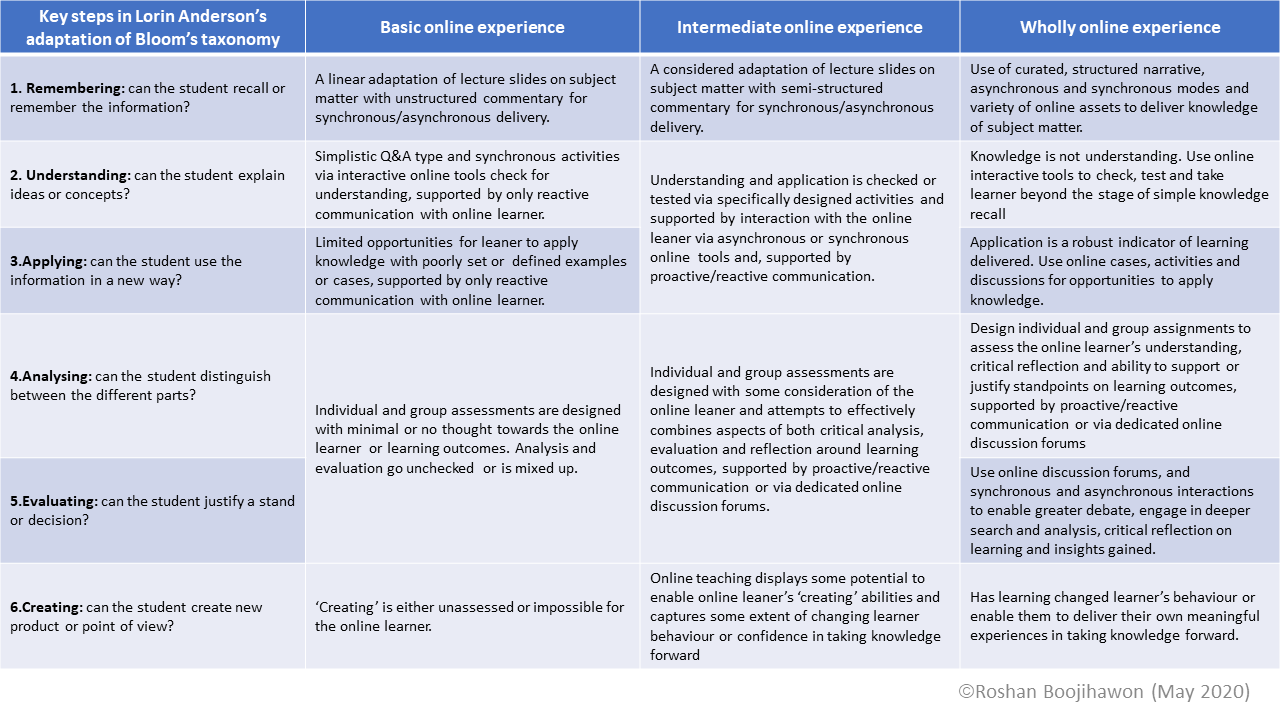
By Dr Roshan Boojihawon and Dr Daniel Chicksand
Birmingham Business School, University of Birmingham
The COVID-19 pandemic has brought on a transformative process in online education globally. Universities around the world are mobilising the courses they offer online, enabled by modern technology to allow for seemingly normal continuation and completion of studies. There is also an expectation that the traditional face-to-face education will pivot to be provided online overnight.
These new expectations on online education provision is worrying on many levels, with the real challenge for educators is to avoid being overwhelmed by the technicalities of online teaching without compromising the rigour of the subject. Even though the move to online education has been, by necessity, rushed, we can still pause to consider how to balance the practicalities of online teaching whilst maintaining the heart of what we want to teach about. Teaching, after all, is teaching whether we do it offline or online.
There is an important debate to have about what ‘good’ online teaching looks like. On one hand, we have a replication of face-to-face teaching through platforms such as Zoom, and on the other there are wholly-online methods that use data about students’ learning pace and patterns, e.g. UoB online MBA. Although there is no right or wrong answer, the Zoom experience offers an immediate and basic start to online teaching.
Bloom’s taxonomy
Bloom’s taxonomy is a well-established learning framework that neatly illustrates how we can capture lower-order (knowledge and understanding) to higher-order (evaluating and creating) learning or skills outcomes. I extend this framework (figure 1) to illustrate the different possibilities of basic, intermediate and wholly-online experiences. As educators, we need to be conscious of how we are enabling, building, checking and testing for the development and achievement of those skills as seamlessly as possible.

Intermediate online learning experiences, for instance, are the ones where I believe most ‘good’ face-to-face experiences will take place, as it could arguably be the best online experience for the least cost. Broadly, intermediate online experience combines recorded face-to-face delivery with running commentary and well-considered online discussions.
Most online learning platforms, including Canvas, can help in all stages in Bloom’s Taxonomy, a sticking point, however, could be when we assess changed behaviour in the learner. Here, we need to deal with the tougher questions of whether your assessments are robust enough to capture learner’s changing behaviour or whether your online activities engage your learners enough to deliver meaningful learning experiences. Can you create an environment that promotes and captures informal learning? Are your learners able to collaborate and help each other go further?
In many ways, teaching in an online environment is similar to teaching in a traditional classroom. However, doing the normal tasks in an online environment effectively may require a different approach to navigate a unique set of challenges in moving online. Here are some guidelines which might help:
- Think for online content – Uploading your lectures with some commentary might not be enough. It is important to consider all of the critical elements of learning and think about how to design and present them for online learning.
- Communicate frequently; show presence – Communicate frequently with each student in an online environment, so that students feel like they’re part of a learning community.
- Choose words carefully; everything you do online is permanent – Because most of the communication in an online course happens in writing, it’s especially important for you to ensure their written words are not misconstrued. Online communications should be clear and unambiguous.
- Give students structure; and emphasise it every time you can – Online learning offers more flexibility than a traditional classroom setting, but students still need structure to ensure that they are successful. We should not assume that every student learns in the same way or at the same pace, some may need more hand holding than others.
- Be prompt to offer support – Isolation can be daunting for online students; it’s important to pick up on signs when they might be struggling—and act immediately to help them succeed.
- Be flexible; a different test for our patience – Impact of the pandemic will vary from student-to-student based on their contexts, involvement and support, social-emotional wellness, internet and computer access, and learning preferences vary.
Overall, I think we are at a turning point to truly explore the transformative power and potential of online education in all its possibilities, reach and sophistication: the question is: are you ready to move with it?
